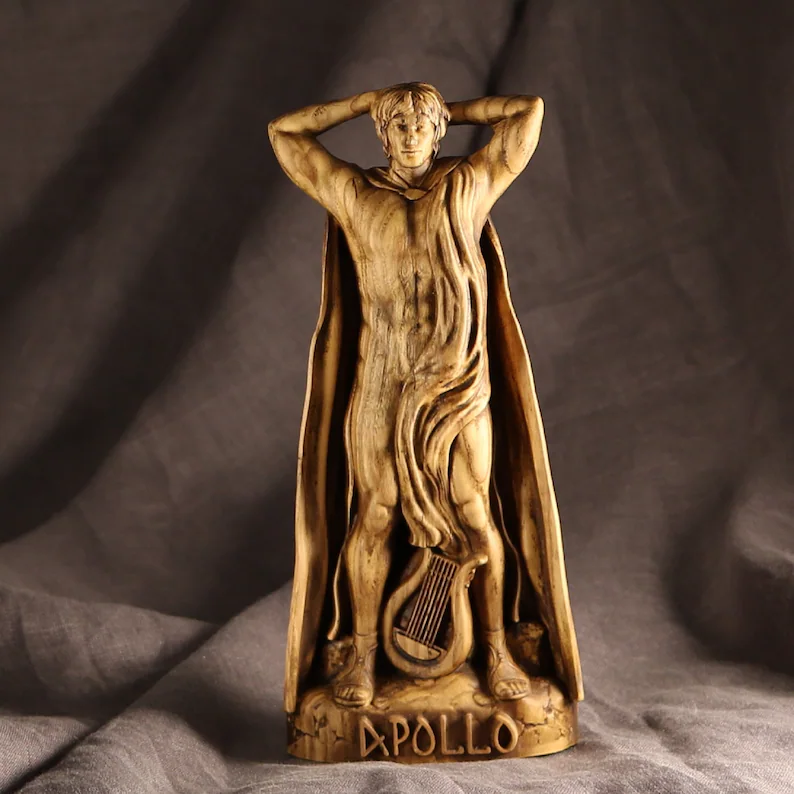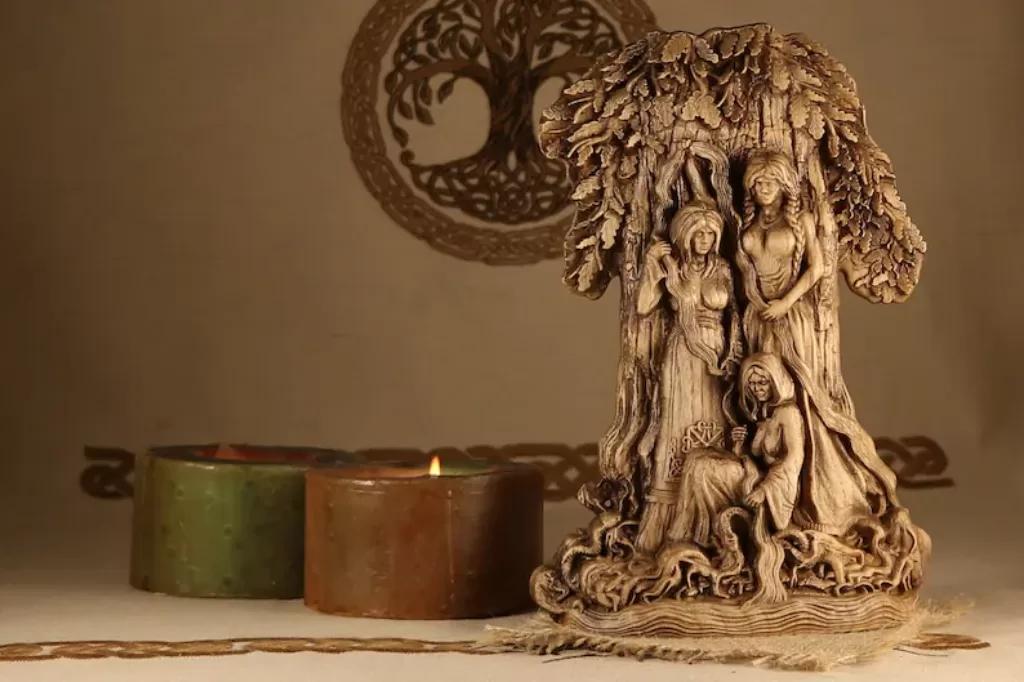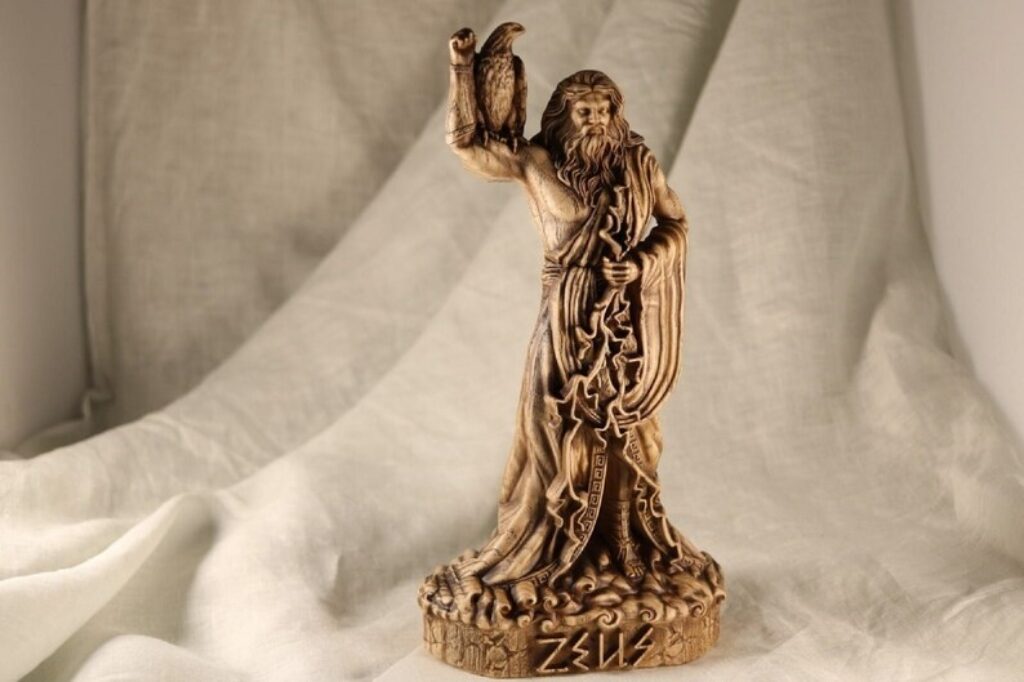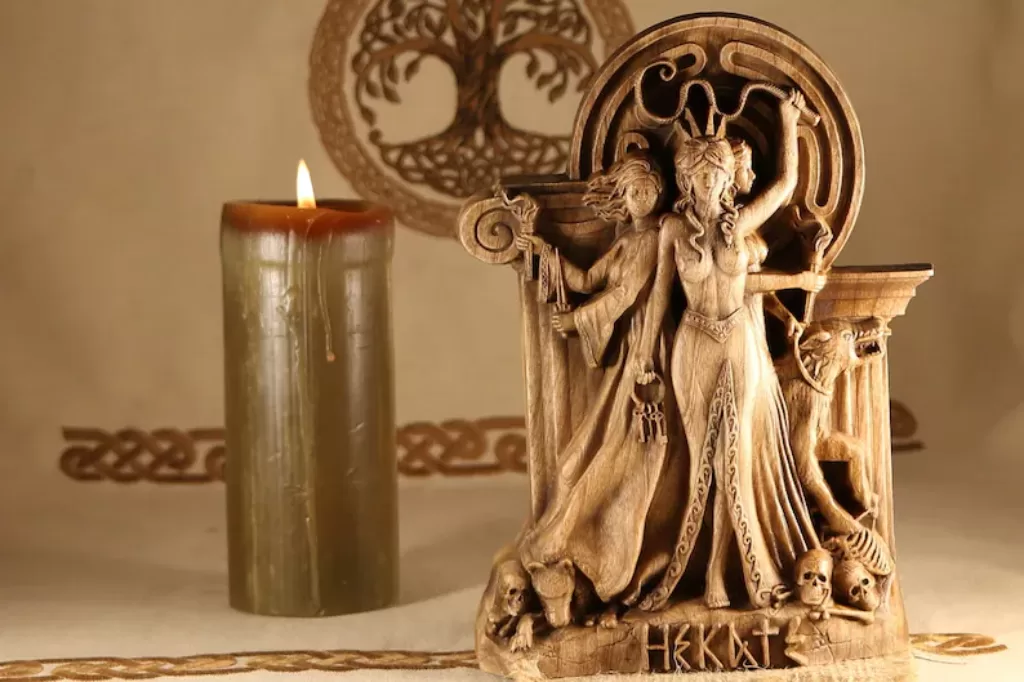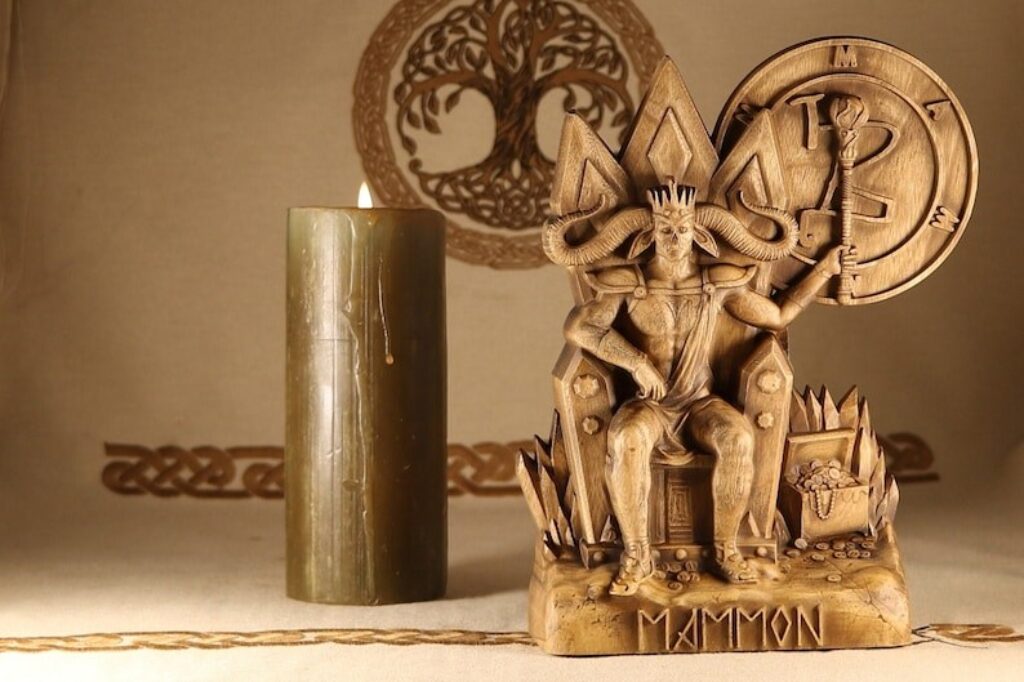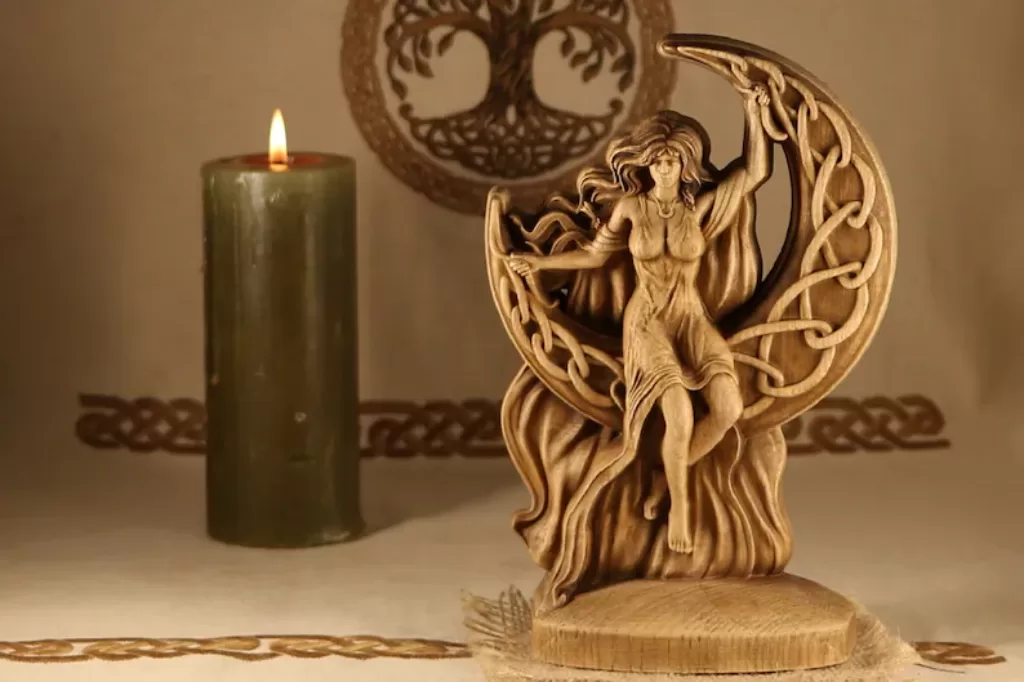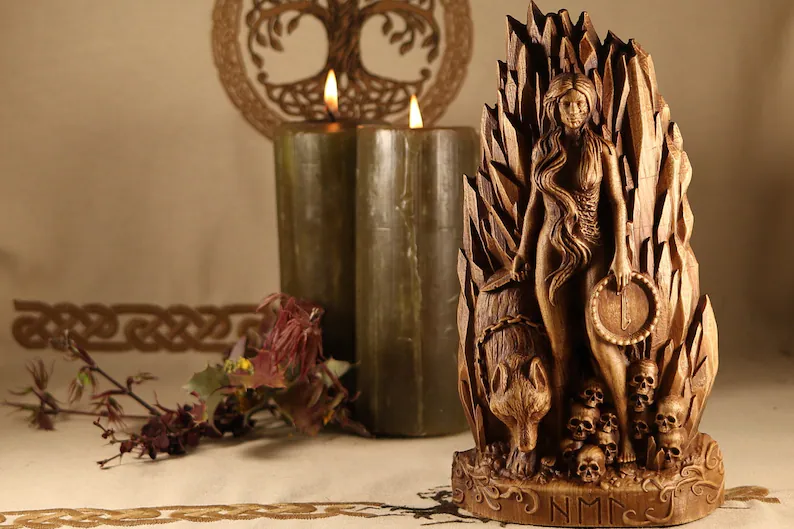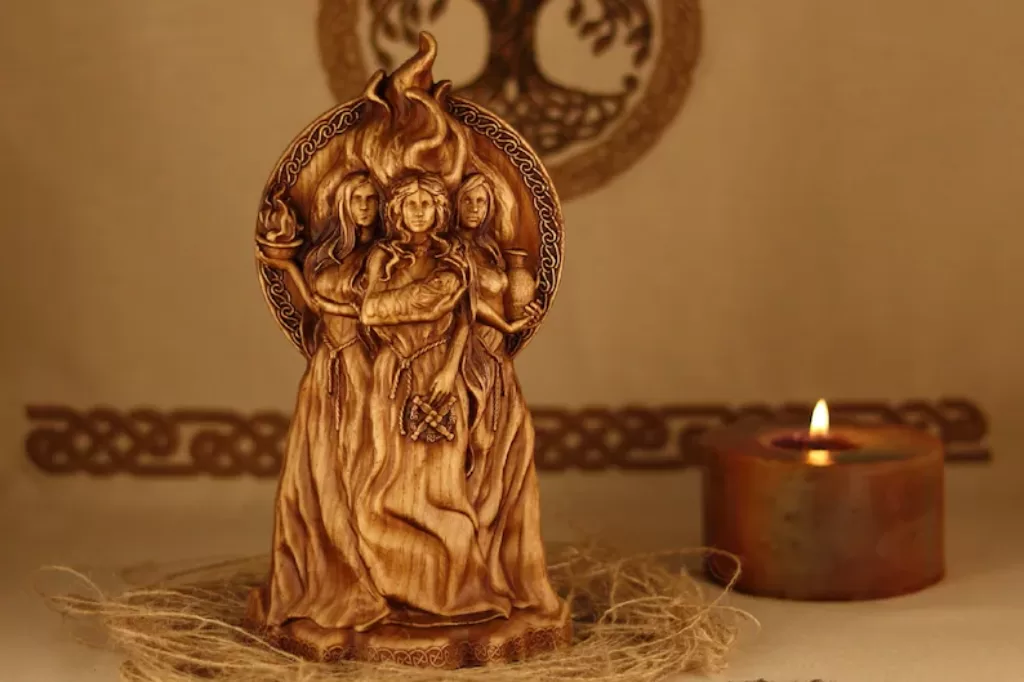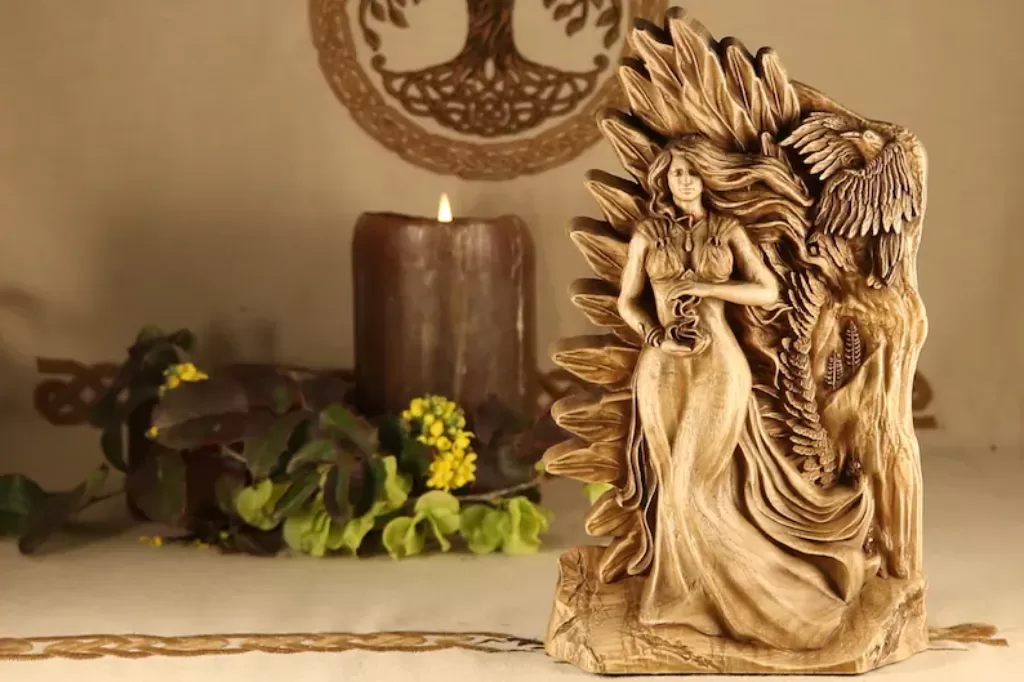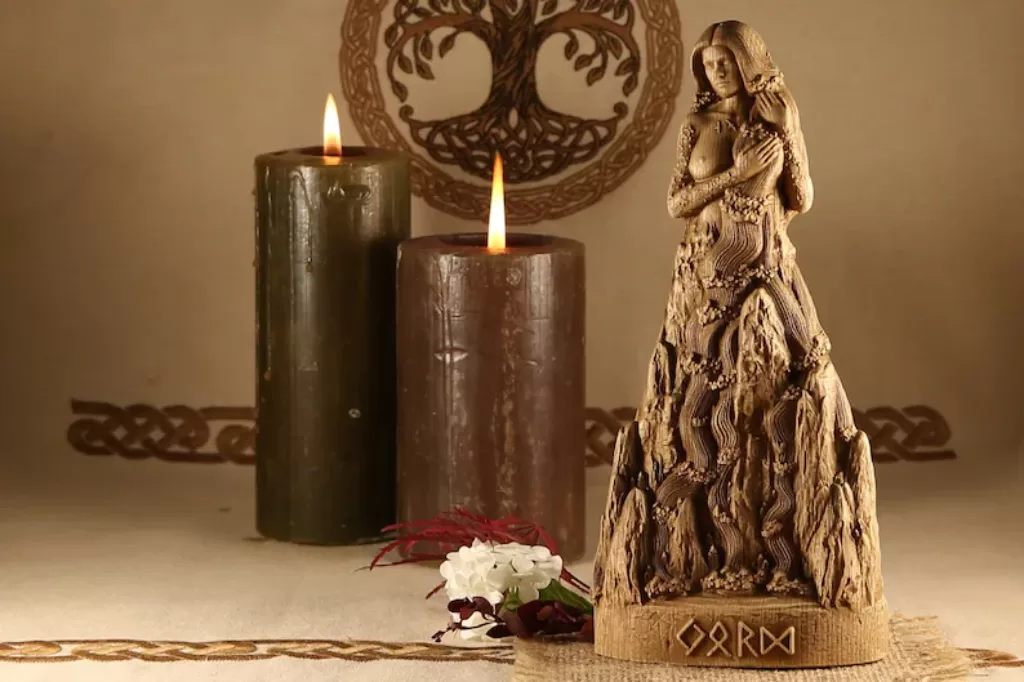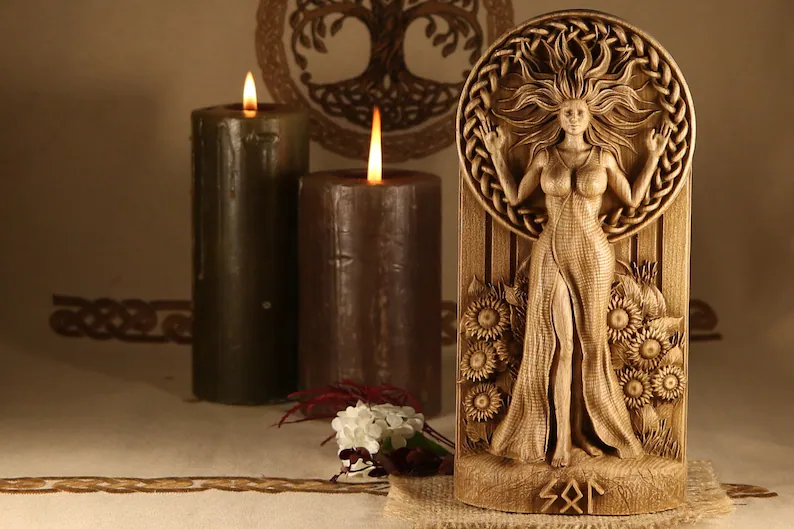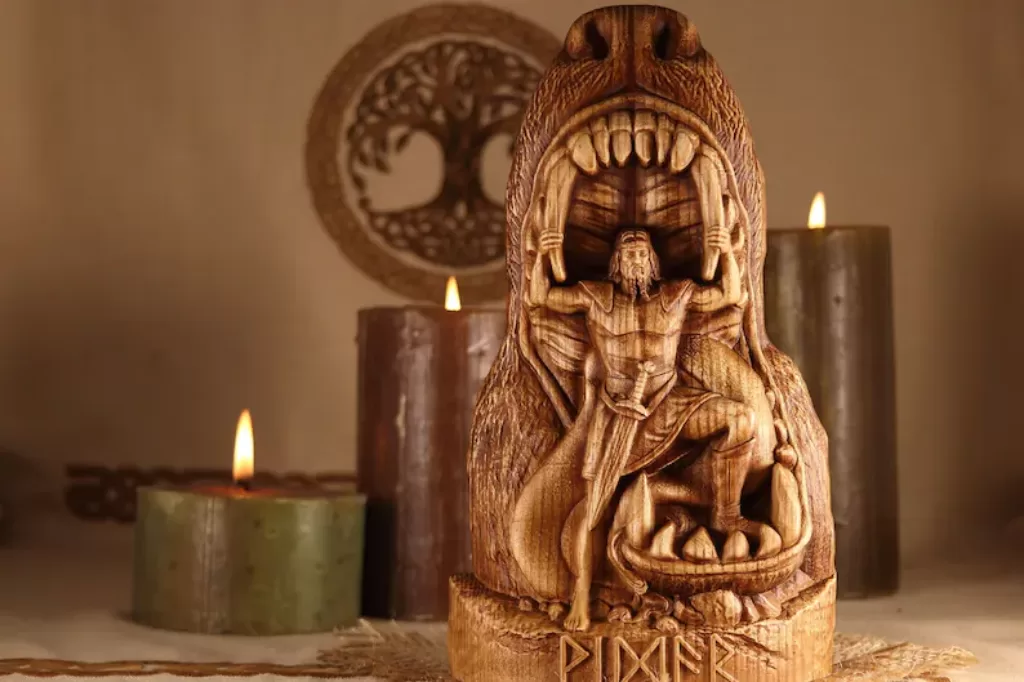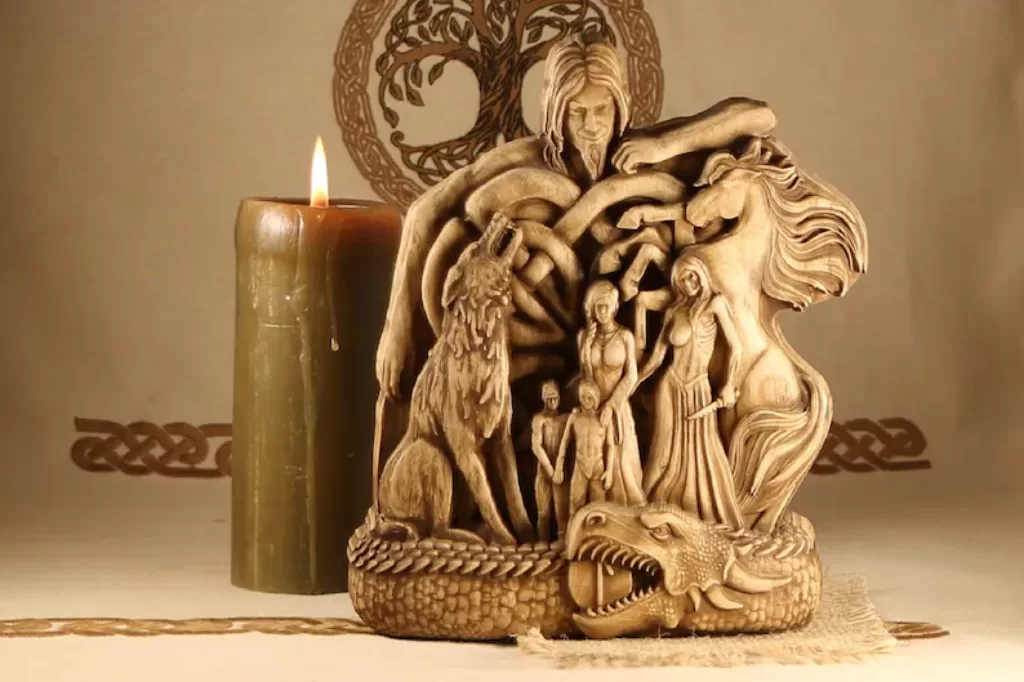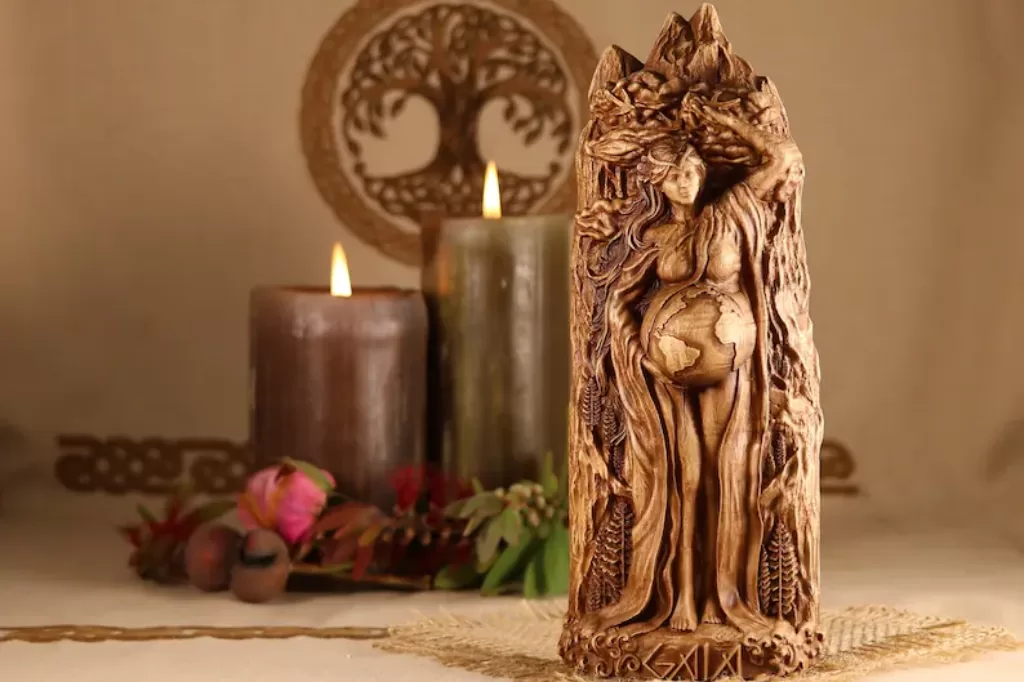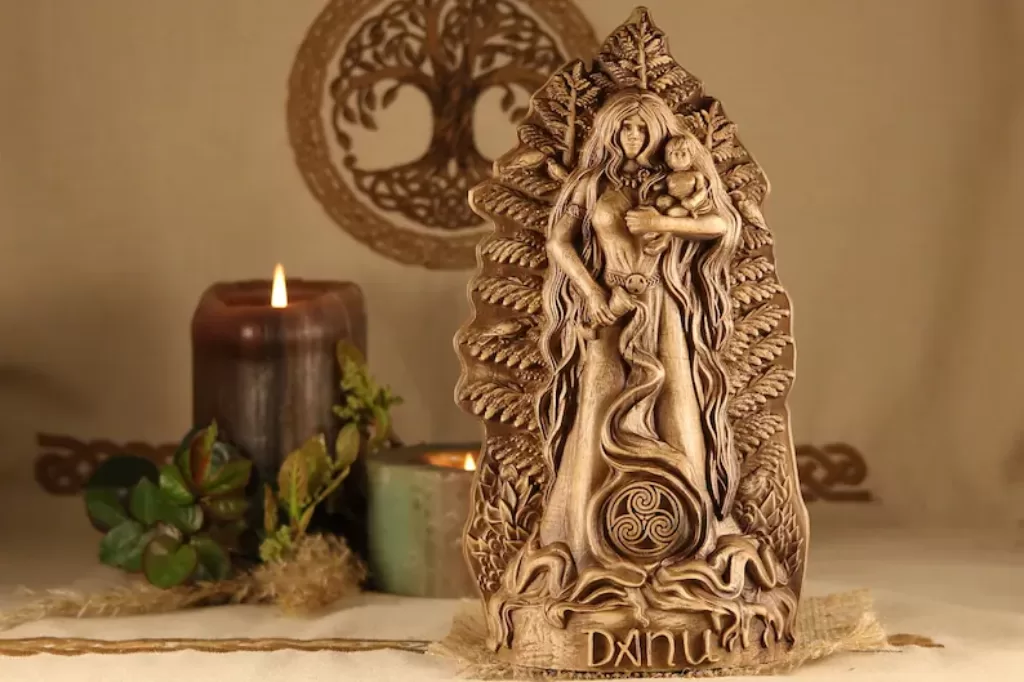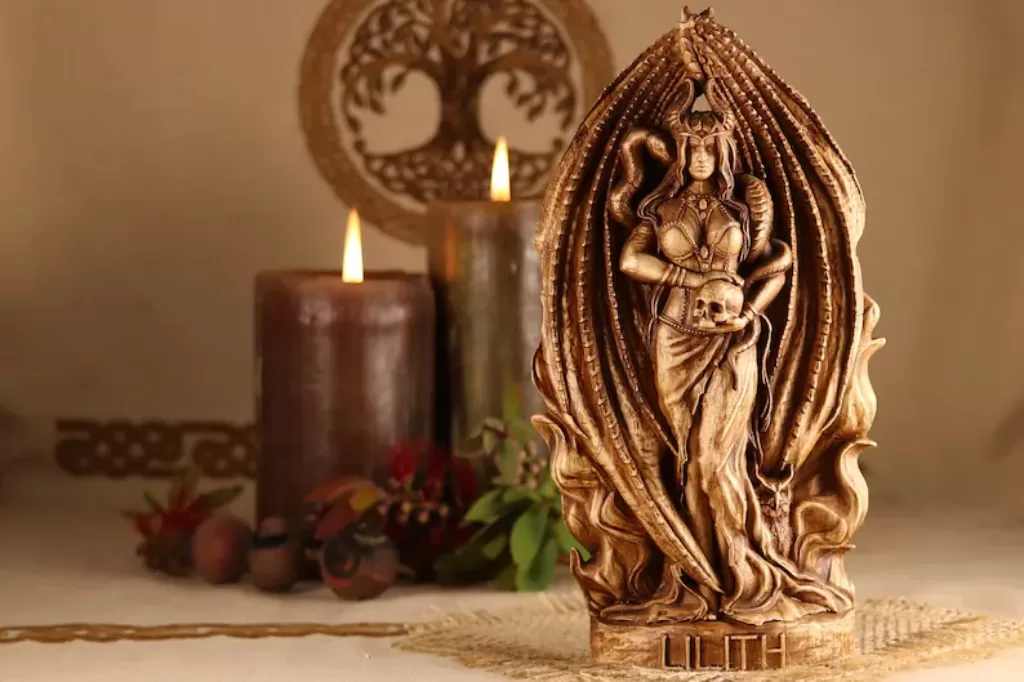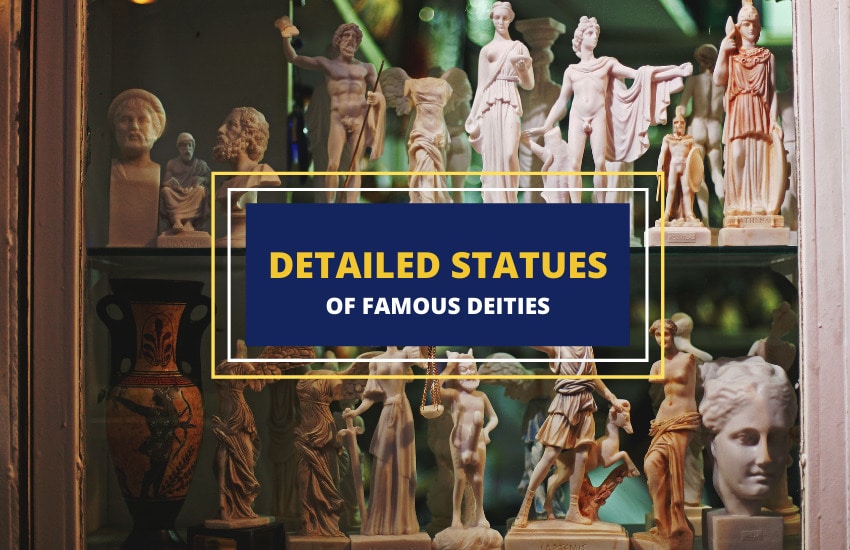
Table of Contents
The best way to understand the ancient gods is to see their symbolism in action through classic and modern depictions. When you take any deity along with their stories and symbolisms, looking upon their likenesses brings a deep synthesis of understanding.
The following list of statues offered by Godnorth on Etsy provides an unequivocal display of deities from around the world. Although most are based in historical reverence, these modern renditions put them in line with our present-day needs and understanding. The beautiful detail and stunning craftsmanship of these figures bring out their characteristics and make them come alive.
Apollo
The Greek sun god Apollo stands before us with a sublime physique in a romantic and laidback gesture. With such beauty, it’s no wonder why he had countless lovers. The lyre sitting at Apollo’s feet emphasizes his eloquence in beauty, music, writing and prose. This also links to the nine muses of poetry, song, and dance. Some say he fathered Orpheus, the great musician, by the muse Calliope.
The Norns
The Norns are the Viking personifications of time that weave the fate of men and gods. Born from chaos, their names are Skuld (future or “duty”), Verdandi (present or “becoming”) and Urd (past or “destiny”). In this glorious sculpture, these three tend to the threads of life near the roots of the Yggdrasil tree of life at Urd’s well.
Zeus
Zeus is the most powerful and greatest of all Greek gods on Mount Olympus. He is the lighting, thunder and clouds devouring the sky during a storm. In this depiction, Zeus stands tall and strong with a lightning bolt that almost seems to flash as it spiders to hit the ground. Zeus is the Divine Judge between all things mortal and immortal. This image highlights these immutable abilities indicated by Zeus’s sacred eagle in his right arm and the notorious Greek patterning around the hem of his garment.
Hecate
One of the most antiquated goddesses among the Greek Olympians is Hecate. According to the myths, she was the only Titan left after the great battle at Thessaly. She is a master of magic, necromancy, and keeper of the crossroads. This labyrinthine statue features all of Hekate’s elements. She’s in her triple goddess form with a dog, keys, serpents, paired torches, daggers, a wheel, and crescent moon.
Mammon
Mammon is the personification of greed, but he was originally a concept that only recently became a tangible entity. The Bible mentions “mammon” twice, in Matthew 6:24 and Luke 16:13, and both reference Jesus speaking about “mammon” in obtaining money while serving God. It’s through fiction, like Milton’s Paradise Lost and Edmund Spender’s The Faerie Queene, that Mammon becomes a demon of avarice.
This striking sculpture amalgamates these stories. Mammon’s likeness indicates his curse after disputing with Asmodeus. He sits on a throne with huge horns, a stern face of death and a fiery scepter. Crystals rise from the base, mimicked by the throne’s backing. A chest of coins sits opened at his feet with a larger coin or seal at his side. It harkens to King Solomon’s seals to subdue demons.
Triple Goddess
This Triple Moon Goddess statue is a beautiful composition. Although she hails from modern Wiccan and Neo-Pagan beliefs, this particular figure echoes the ancient Celtic concept of the moon. This goddess sits as if on a swing after finishing the Celtic knot adorning the moon by holding the strings at both ends. Although most depictions of the Triple Moon Goddess show maiden, mother, and crone, they are more subtle here. Even though there is only one figure, the other two forms are the moon she sits on and the one splayed on her neck.
- Hel
Hel is a neutral goddess of one of the many underworlds among the Norse. People who pass from old age, illness or some other misfortune go to her realm. In this astonishing image, Hel is both alive and dead; indicated by the decay on her left side while her right side is youthful and beautiful. The amazing details of the skulls by her feet are impressive yet terrifying. What makes it a true classic is how she brandishes a knife above her beloved hellhound, Garmr.
Brigit
Brigit is a most beloved deity in Celtic culture. As the patroness of Imbolc, the celebration held around February 1st, she rules over blacksmithing, crafts, fire, water, poetry, fertility, and the mysteries of the unknown. In this superb rendition, she’s in her triple form. A maternal image sits front and center along with a child and sacred knot. Brigit’s fire form is on her right and the goddess on the left holding a vase represents her dominion over water.
Morrigan
The Morrigan is one of the most terrifying goddesses in Celtic myth. Her name means “Phantom Queen” or “Great Goddess”. This carving encapsulates the Morrigan in a moment of magic standing next to one of her favorite animals, the raven. When the raven appears, the Morrigan is in battle formation where she decides the fate of warriors. The background feathers and flowing garment emphasizes her associations with the mystery of druidic power.
Jord
Jord is the Viking’s feminine personification of earth. She is a giantess and mother to the thunder god, Thor. The Vikings prayed to her for abundant crops, children, and the fullness of the earth. Her depiction here is exquisite. It not only suits Jord through its wooden medium, but also in her supple portrayal. She stands as strong as the stone fused to her lower half while her hair flows adorned with foliage.
Sol/Sunna
As one of the most primordial of deities among the Norse, Sol or Sunna is the personification of the sun. This statue is a charismatic combination of the classic and modern. Her hair arrangement echoes the rays of the sun as they drop in straight lines down to the earth behind her. The prodigious intricacy of her dress along with the multitudes of sunflowers gives off a warming summertime sensation. Her arms raise up to the sun disc behind her, interlaced with braiding.
Vidar
Vidar is the Norse god of silent revenge. This carving shows him about to defeat the great monster wolf Fenrir while holding his sword and wearing the one magic boot. It’s a prophetic image since this scene is his fate in the final moments of Ragnarok, the Norse Apocalypse. You can almost sense the beast’s torrid stench exuding from its nostrils while Vidar steps on the maw right before victory.
Loki’s Family
Loki is the Norse giant of mischief who became a god by way of some trick. This intricate family portrait shows Loki looking upon his children with fatherly love above a Nordic knot. Encircling the bottom is Loki’s son, the great world snake Jormungandr, fated to kill Thor during Ragnarok. The order of Loki’s children standing from visual left to right are:
- Fenrir: The great monster wolf and son of Loki who Vidar defeats during Ragnarok.
- Sigyn: Loki’s second wife featured with their two sons Nari and Narvi.
- Hel: Loki’s daughter who rules the underworld; depicted half alive and half dead.
- Sleipnir: Odin’s shapeshifting eight-legged horse that’s also Loki’s son.
Gaia
Gaia is the primordial Greek personification of Mother Earth. She gives birth to everything, even Titans and humans. She is consort to Uranus, who consistently and unceasingly impregnates her. This statue of Gaia shows her full with child but her belly depicts the globe. Her right hand braces this worldly stomach with the left rising to heaven. Is she pushing Uranus away? Or, is she symbolizing the concept “as above, so below”?
Danu
Danu is the Celtic primordial mother goddess of deities and humankind. In this profound portrayal, Danu holds a child in her left arm while pouring out the waters of life from her right. The water and her hair flow down into a traditional Celtic spiral knot. Trees, plants, and foliage fill the background as she looks upon the viewer with love and mercy. This breathtaking image is precise to what we know about her through writings and inscriptions.
Lilith
Lilith was the handmaiden of Inanna/Ishtar and the first wife of Adam, according to Sumerian and Jewish texts. This rendition shows her as the wife of Asmodeus, after leaving Adam for his unequal treatment. Lilith is resplendent with a tiara and demonic wings as a snake curls around her shoulders. Lilith stands beautiful and terrible, staring at the viewer. Her figure is soft yet imposing with an impish glance. This makes the skull clutched between her hands appear all the more sinister as her sacred owl tucks behind her.
In Brief
Although created through a modern lens, these marvelous statues echo the depths of antiquity in harmonious perfection. They are so gorgeously detailed that they take your imagination on a journey into and connection with the soul.
Truly, it takes a special talent to display the traditional meanings while simultaneously injecting a kiss of the here-and-now. It’s this unassuming modernism with venerable attention that gives these statues by Godsnorth an almost indescribable uniqueness yet simple complexity.



